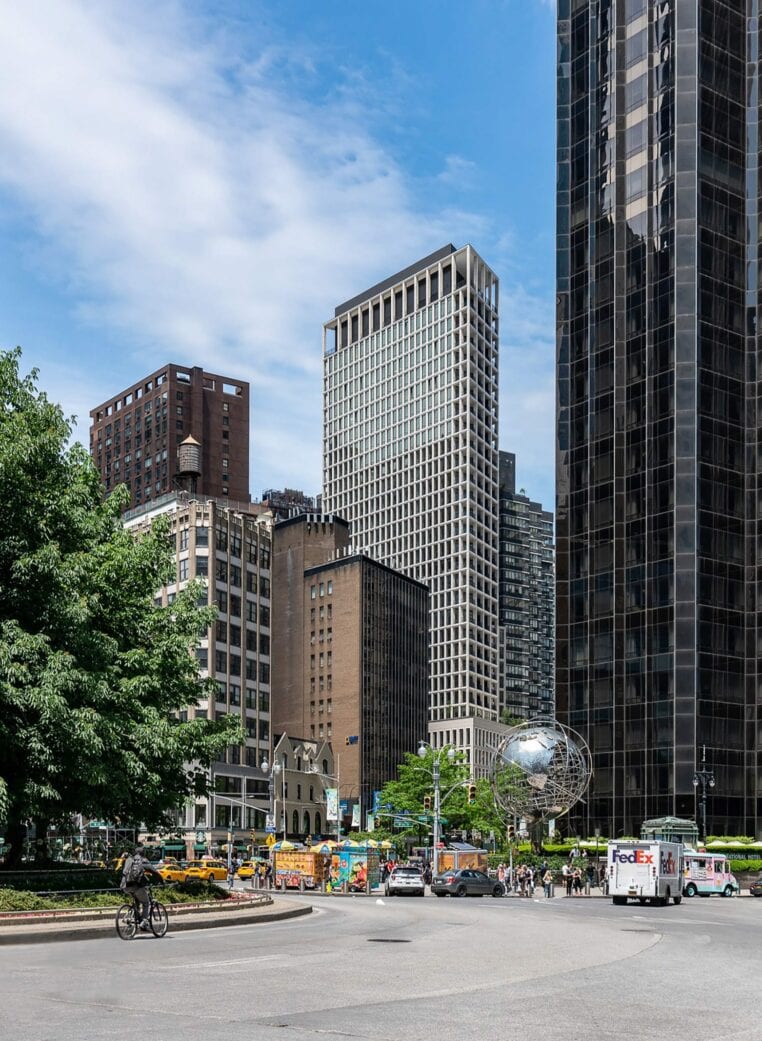Situated in the Upper West Side, one of Manhattan’s most desirable and iconic neighborhoods, 15 West 61st Street has transformed a high-value corner on Broadway into a luxury residence that blends historic character, structure, and sustainability within one contemporary form. The building sets back dramatically at the seventh floor to rise 32 stories on an attenuated tower floor plate—allowing for windows in every room, including kitchens and bathrooms. A six-story podium with two floors of retail abuts neighboring properties to preserve the continuity of the streetscape.
The building is distinguished by its modern masonry facade, which pays homage to the neighborhood’s material character. Custom terracotta profiles, manufactured in Germany, elicit warmth and domesticity, while deep, recessed windows offer a sense of privacy. The self-shading facade enhances the building’s environmental performance, while an integrated micro-column structure prevents freestanding columns from interfering with the flexibility of the interior.
The tower’s prime location near Lincoln Center, Central Park, and Columbus Circle offers impressive views of Central Park, the Hudson River, and up and down Broadway. Many units feature loggias, which weave the outdoors into daily life and create outward-looking residences. The building’s range of amenities includes a large, communal terrace on the seventh floor, a fitness center, a game room, and a variety of lounges. At the crown, a communal triple-height loggia leads to a lounge area with panoramic views.

